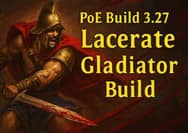Dear exiles, this is the Path of Building Guide for freshmen, which is shared by the Professional PoE Shop MmoGah. In this guide, I will show you how to install, import/export paste bin, and so on.
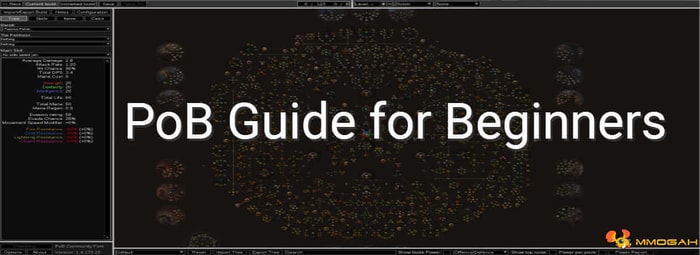
Path of Building is short for PoB, which is a useful tool for PoE builds. It is a third-party simulation or calculation program for any path of exile character. You can import characters, path of trees, and PoE Items from the life service or create and save your own builds without having to try them out in the game first. It also offers huge builds in the database for most items and the mods to select and craft your items there.
1. Download and Install
Download and install the program from the github website https://github.com/PathOfBuildingCommunity/PathOfBuilding/releases. Start it up. It might want to install some updates, just wait until that's done and you're ready to go.

Now, if you're not already on the screen that shows you to the passive tree in the middle and says Unnamed Build at the top left, just press “New” in the top. You can now start experimenting with the classes, tree skills, and items.
2. Import and Export
If you want to import a build either from a link to the paste bin, the paste bin itself, or the game, make sure to save your current build and create a new one. First select import/export in the top left. Now there are three ways to import a character:
The first one is to get it from an actual character in the game. For that, you need to know the characters' account name, press Start, select a character from the list and select which information you want to import.
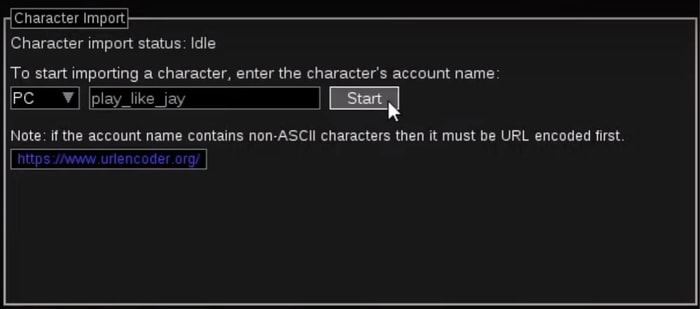
The second and most common way is to import the character from the paste bin link. You don't have to click the link wherever it is provided. Just copy it. And in PoB, select import from paste bin, paste the link, then import, and import again.
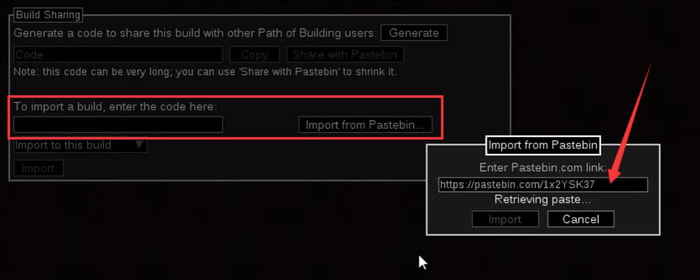
If the second way fails, there is a third way. In this case, open the link in a browser, and copy everything from the paste bin. Go back to your PoB, paste code there, and import.
If you want to export your build to share with other players or to save it for yourself, go to import-export again and click “Generate”. You can now either copy this extremely long code and send it to other players, which I only recommend if the paste bin website is offline, or click share with paste bin to generate a link you can share.

3. Settings
Once you have a boot loaded up, you can see the passive tree, skills, skill setups, and items. Above the equipped items, you can manage Item Sets. Most players do not use the feature, but in my build, there are sometimes multiple setups with different gear for different use cases or game stages.

When looking at the tree, there is a drop-down menu on the bottom left where it can select different trees without changing the gear. I use it to show passive tree progression while leveling a character. It can also come in handy if you want to try different paths without having to copy the whole build again.

In this skills window, you can find all active and passive skills with the links and where they are socketed. You can edit the labels to make notes or clarify something.
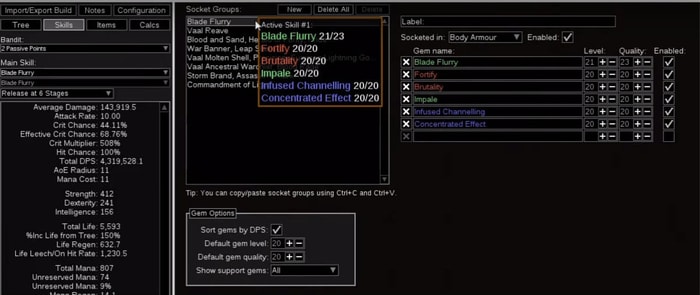
Something extremely important and where many players experience difficulties is the Configuration tab. If you import it to build, this should all be set already, so don't change anything if you don't know exactly what it does or if it reflects the actual in-game situations. However, if you are doing your own builds as I do, I always select the parameters to show a passing situation, meaning a single target with strong resistances. So, for example, I selected that the enemy shaper or a guardian, and even though this build generates Frenzy Charges on kill, I do not select them because I cannot generate them in an instance boss encounter without minions. Depending on what build you're playing, you might not want to showcase the bossing but maybe a mapping situation. Since you have to set these configurations differently for every single build or even every single passive or item you have, I will not go further into this.

Just remember never to set the enemy is shocked to choose because even if you build the struck an enemy, this will almost always calculate a run value. This leads me to the last thing I want to talk about in this video.
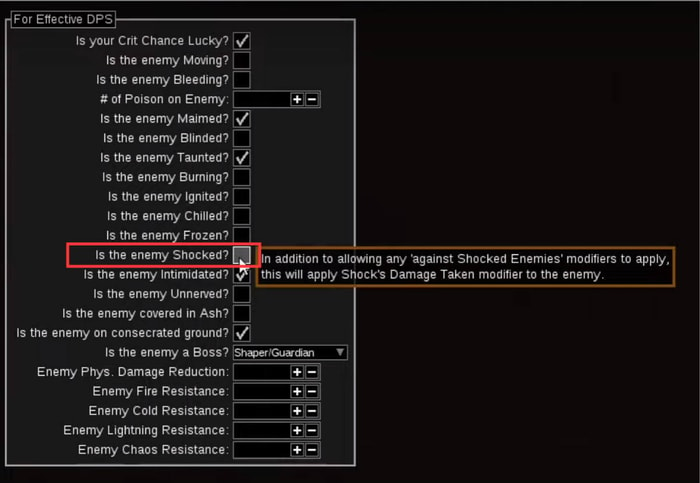
4. Fork
The normal PoB has a lot of flaws, but there's a fork that is kind of a different version or an add-on of PoB on github which improves and adds a lot of highly requested features made by local identity. Making use of it is extremely simple. You can watch Play Like Jay’s YouTube to learn how to install and run the fork.
First, you need the normal PoB ready and running. Then go to the directory C program data path of building or to the folder you install PoB. There you will find a file called “manifest.xml”. Make a backup copy and then open it with a text editor. Close to the beginning. There are lines that start with the source, and one of those says something with part equals program. Change the part it says open our “arl” path of building community. Save and start your PoB as if nothing has happened.
It will now and in future download updates related to this fork. Once it's done downloading, which can take a minute, it'll tell you that an update is ready. Click on it and press update. You will already be able to see differences when looking at the stats, but the biggest difference is the PoB now correctly calculates things like impale, shock, or elusive. An important thing to note here is that there are sometimes problems when trying to import a build made with the fork corrosion of PoB to the original POB. So if you're not sure if the other person has the fork installed, you have to revert the changes made to the manifested xml file. It will then install the normal PoB. Open the build in there and generate a new paste bin. This is why I keep a copy of the original manifest file to quickly change between PoBs.
Congratulations! You can now use the basic functions of Path of Building. You can come to MmoGah to view more helpful PoE Guides, and you can also buy Cheap and Safe Exalted Orbs and Chaos Orbs here. Last but not least, thanks for Jay’s useful guide on PoB.
